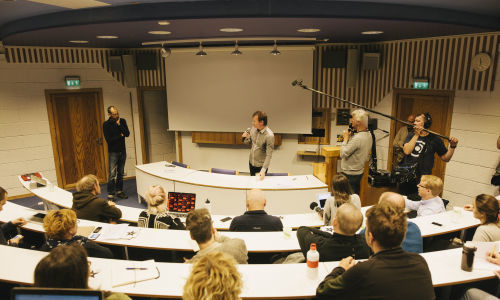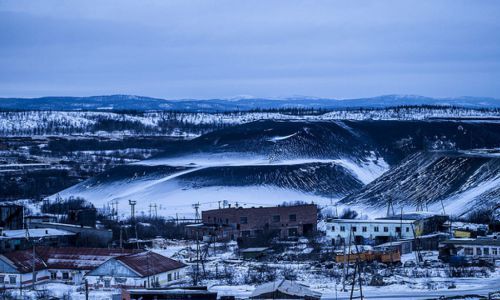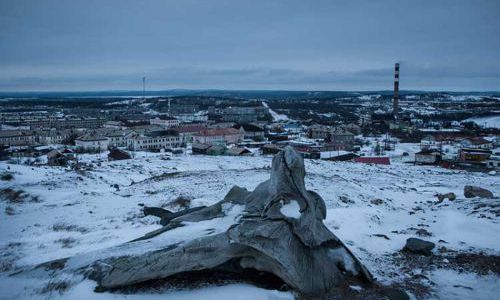Create your own Changing Weathers Book in PDF. Select articles and add them into your personal collection of Episodes.
Then go to Show your book.
Add to book
Time's Up
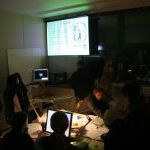 The white paper in your hands is our attempt to summarise our activities within the Changing Weathers project in the light of previous developments and where we are aiming to develop in our next stages.
The white paper in your hands is our attempt to summarise our activities within the Changing Weathers project in the light of previous developments and where we are aiming to develop in our next stages.
Add to book
Time's Up
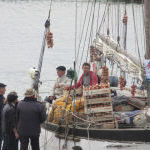 In the transiencies journeys we aim to collect and amalgamate ideas, experiences and dreams, from those who are involved and/or influenced in alternative practices of transporting goods.
In the transiencies journeys we aim to collect and amalgamate ideas, experiences and dreams, from those who are involved and/or influenced in alternative practices of transporting goods.
Add to book
Time's Up
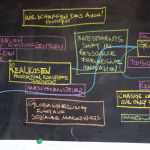 Our current future scenario includes ocean system collapse, where we note that the collapse tends to be on the large predator end of things, while, to a larger degree, the smaller and less carnivorous parts of the ecosystem are less impacted. So unduly large amounts of energy and time are currently spent hunting bluefin tuna for high paying sushi aficionados, while carp, jellyfish and seaweeds are left, in general, alone and are even regarded as plagues. This is, of course not quite true.
Our current future scenario includes ocean system collapse, where we note that the collapse tends to be on the large predator end of things, while, to a larger degree, the smaller and less carnivorous parts of the ecosystem are less impacted. So unduly large amounts of energy and time are currently spent hunting bluefin tuna for high paying sushi aficionados, while carp, jellyfish and seaweeds are left, in general, alone and are even regarded as plagues. This is, of course not quite true.
Add to book
Judith van der Elst
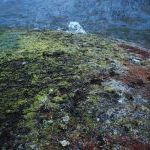 Walking. Traversing the land in the Arctic and Sub-Arctic, lichen underfoot, no tree in sight. Did PreCambrium land look like this?
Walking. Traversing the land in the Arctic and Sub-Arctic, lichen underfoot, no tree in sight. Did PreCambrium land look like this?
Add to book
Lea Schick & Hannah Rogers
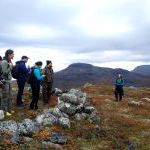 This conversation is a story of ‘becoming together’. Becoming ethnographers collectively and in relation to the informants we studied. This is what we have come to label ‘para-artistic ethnography’.
This conversation is a story of ‘becoming together’. Becoming ethnographers collectively and in relation to the informants we studied. This is what we have come to label ‘para-artistic ethnography’.
Add to book
Antti Tenetz
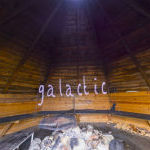 This is an exploration of the landscape around Kilpisjärvi lake. Part of the focus is to find and study the layers of Hybrid ecology; where biological, technological and cultural layers are coexisting and influencing each other in the landscape. Our team is set out on several days of fieldwork in the surroundings. Each group member is uncovering layers of the landscape through their own perspective and practice, exploring the sonic, political, microbial, visual, and invisible aspects of the layers.
This is an exploration of the landscape around Kilpisjärvi lake. Part of the focus is to find and study the layers of Hybrid ecology; where biological, technological and cultural layers are coexisting and influencing each other in the landscape. Our team is set out on several days of fieldwork in the surroundings. Each group member is uncovering layers of the landscape through their own perspective and practice, exploring the sonic, political, microbial, visual, and invisible aspects of the layers.
Add to book
Marko Peljhan & Matthew Biederman
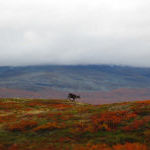 Our senses guide us through the world. Combined with experience, knowledge and openness we can begin to develop new relationships and understandings of Earth systems and our collective embedded positions within.
Our senses guide us through the world. Combined with experience, knowledge and openness we can begin to develop new relationships and understandings of Earth systems and our collective embedded positions within.
Add to book
Andrew Gryf Paterson
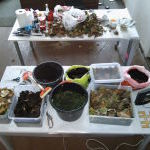 Soil, and soil-like substrate such as compost, inspires this essay as a reflection on the art-ecology-heritage poetics that emerged from co-organising a trans-disciplinary workshop. Different temporal-focuses are mixed within the text to elaborate upon the potential of soil future(s), past(s), and present(s), in relation to artist-led cultural heritage and innovation.
Soil, and soil-like substrate such as compost, inspires this essay as a reflection on the art-ecology-heritage poetics that emerged from co-organising a trans-disciplinary workshop. Different temporal-focuses are mixed within the text to elaborate upon the potential of soil future(s), past(s), and present(s), in relation to artist-led cultural heritage and innovation.
Add to book
Timothy Morton
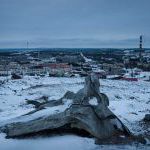 In this essay, which draws on his book Dark Ecology, For a Logic of Coexistence, Timothy Morton — who originally coined the term dark ecology — explains what dark ecology is. He also argues how agrilogistics underpins our ecological crisis and our view of the world.
In this essay, which draws on his book Dark Ecology, For a Logic of Coexistence, Timothy Morton — who originally coined the term dark ecology — explains what dark ecology is. He also argues how agrilogistics underpins our ecological crisis and our view of the world.
Add to book
An interview with Tatjana Gorbachewskaja
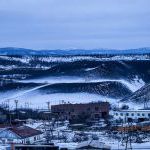 Tatjana Gorbachewskaja is an architect who grew up in the Russian town Nikel, located in the far North near the Russian border with Norway. For Dark Ecology Project she researched the materials of her hometown together with Katya Larina, resulting in Nikel Materiality, which consists of a small publication, a presentation and guided walk through Nikel.
Tatjana Gorbachewskaja is an architect who grew up in the Russian town Nikel, located in the far North near the Russian border with Norway. For Dark Ecology Project she researched the materials of her hometown together with Katya Larina, resulting in Nikel Materiality, which consists of a small publication, a presentation and guided walk through Nikel.
Add to book
Timothy Morton
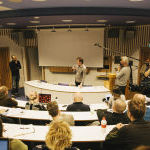 Dark ecology starts off dark as in depressing. Then it becomes dark as in mysterious. Then it ends dark as in sweet dark chocolate. In this lecture I'm going to provide an experiential map of dark ecology—a phenomenology to be more precise.
Dark ecology starts off dark as in depressing. Then it becomes dark as in mysterious. Then it ends dark as in sweet dark chocolate. In this lecture I'm going to provide an experiential map of dark ecology—a phenomenology to be more precise.
 The white paper in your hands is our attempt to summarise our activities within the Changing Weathers project in the light of previous developments and where we are aiming to develop in our next stages.
The white paper in your hands is our attempt to summarise our activities within the Changing Weathers project in the light of previous developments and where we are aiming to develop in our next stages.
 In the transiencies journeys we aim to collect and amalgamate ideas, experiences and dreams, from those who are involved and/or influenced in alternative practices of transporting goods.
In the transiencies journeys we aim to collect and amalgamate ideas, experiences and dreams, from those who are involved and/or influenced in alternative practices of transporting goods.
 Our current future scenario includes ocean system collapse, where we note that the collapse tends to be on the large predator end of things, while, to a larger degree, the smaller and less carnivorous parts of the ecosystem are less impacted. So unduly large amounts of energy and time are currently spent hunting bluefin tuna for high paying sushi aficionados, while carp, jellyfish and seaweeds are left, in general, alone and are even regarded as plagues. This is, of course not quite true.
Our current future scenario includes ocean system collapse, where we note that the collapse tends to be on the large predator end of things, while, to a larger degree, the smaller and less carnivorous parts of the ecosystem are less impacted. So unduly large amounts of energy and time are currently spent hunting bluefin tuna for high paying sushi aficionados, while carp, jellyfish and seaweeds are left, in general, alone and are even regarded as plagues. This is, of course not quite true.
 Walking. Traversing the land in the Arctic and Sub-Arctic, lichen underfoot, no tree in sight. Did PreCambrium land look like this?
Walking. Traversing the land in the Arctic and Sub-Arctic, lichen underfoot, no tree in sight. Did PreCambrium land look like this?
 This conversation is a story of ‘becoming together’. Becoming ethnographers collectively and in relation to the informants we studied. This is what we have come to label ‘para-artistic ethnography’.
This conversation is a story of ‘becoming together’. Becoming ethnographers collectively and in relation to the informants we studied. This is what we have come to label ‘para-artistic ethnography’.
 This is an exploration of the landscape around Kilpisjärvi lake. Part of the focus is to find and study the layers of Hybrid ecology; where biological, technological and cultural layers are coexisting and influencing each other in the landscape. Our team is set out on several days of fieldwork in the surroundings. Each group member is uncovering layers of the landscape through their own perspective and practice, exploring the sonic, political, microbial, visual, and invisible aspects of the layers.
This is an exploration of the landscape around Kilpisjärvi lake. Part of the focus is to find and study the layers of Hybrid ecology; where biological, technological and cultural layers are coexisting and influencing each other in the landscape. Our team is set out on several days of fieldwork in the surroundings. Each group member is uncovering layers of the landscape through their own perspective and practice, exploring the sonic, political, microbial, visual, and invisible aspects of the layers.
 Our senses guide us through the world. Combined with experience, knowledge and openness we can begin to develop new relationships and understandings of Earth systems and our collective embedded positions within.
Our senses guide us through the world. Combined with experience, knowledge and openness we can begin to develop new relationships and understandings of Earth systems and our collective embedded positions within.
 Soil, and soil-like substrate such as compost, inspires this essay as a reflection on the art-ecology-heritage poetics that emerged from co-organising a trans-disciplinary workshop. Different temporal-focuses are mixed within the text to elaborate upon the potential of soil future(s), past(s), and present(s), in relation to artist-led cultural heritage and innovation.
Soil, and soil-like substrate such as compost, inspires this essay as a reflection on the art-ecology-heritage poetics that emerged from co-organising a trans-disciplinary workshop. Different temporal-focuses are mixed within the text to elaborate upon the potential of soil future(s), past(s), and present(s), in relation to artist-led cultural heritage and innovation.
 In this essay, which draws on his book Dark Ecology, For a Logic of Coexistence, Timothy Morton — who originally coined the term dark ecology — explains what dark ecology is. He also argues how agrilogistics underpins our ecological crisis and our view of the world.
In this essay, which draws on his book Dark Ecology, For a Logic of Coexistence, Timothy Morton — who originally coined the term dark ecology — explains what dark ecology is. He also argues how agrilogistics underpins our ecological crisis and our view of the world.
 Tatjana Gorbachewskaja is an architect who grew up in the Russian town Nikel, located in the far North near the Russian border with Norway. For Dark Ecology Project she researched the materials of her hometown together with Katya Larina, resulting in Nikel Materiality, which consists of a small publication, a presentation and guided walk through Nikel.
Tatjana Gorbachewskaja is an architect who grew up in the Russian town Nikel, located in the far North near the Russian border with Norway. For Dark Ecology Project she researched the materials of her hometown together with Katya Larina, resulting in Nikel Materiality, which consists of a small publication, a presentation and guided walk through Nikel.
 Dark ecology starts off dark as in depressing. Then it becomes dark as in mysterious. Then it ends dark as in sweet dark chocolate. In this lecture I'm going to provide an experiential map of dark ecology—a phenomenology to be more precise.
Dark ecology starts off dark as in depressing. Then it becomes dark as in mysterious. Then it ends dark as in sweet dark chocolate. In this lecture I'm going to provide an experiential map of dark ecology—a phenomenology to be more precise.
